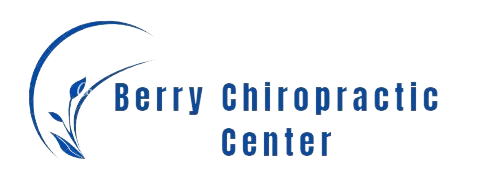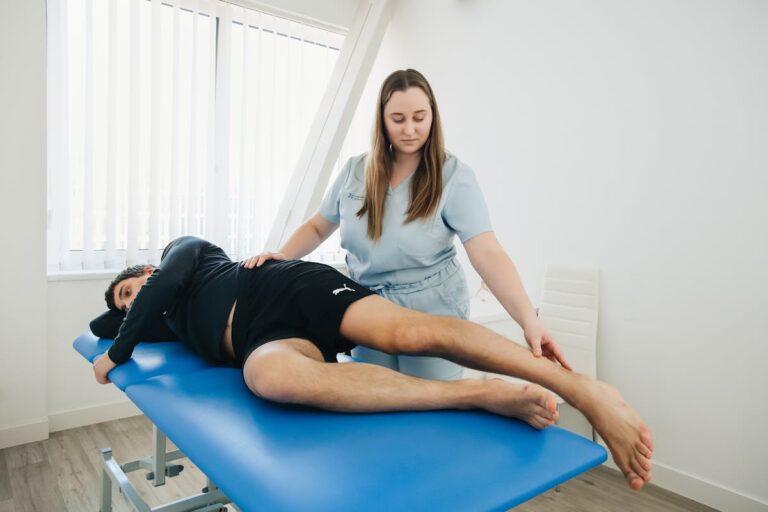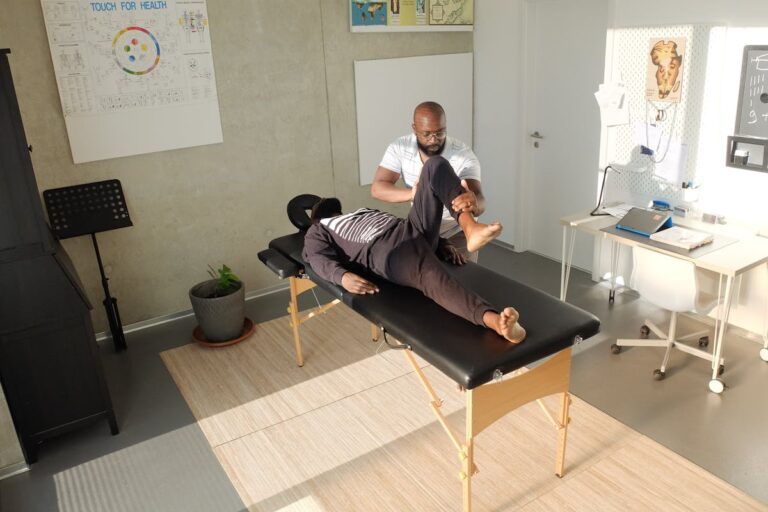Post-chiropractic care, crucial for treatment efficacy, involves hydration, gentle stretching, rest, and lesser-known practices. Regular body response monitoring and proper posture maintenance optimize adjustment benefits. These practices ensure robust recovery after chiropractic adjustment.
Understanding Chiropractic Adjustments
Chiropractic adjustments, a holistic, non-invasive, and drug-free health care approach, aim to reduce pain, enhance body function, and amplify natural healing. D.D. Palmer, credited with the first spinal adjustment in 1895, founded this field. It has evolved to include various techniques like the Diversified method and the Activator method. The former employs a high-velocity, low-amplitude thrust for spine alignment and movement restoration. The latter uses a handheld instrument to gently restore motion to targeted spinal vertebrae or joints. Patient understanding of chiropractic science and history can optimize health decisions and treatment experiences.
Importance of Post-Adjustment Hydration
Hydration after a chiropractic adjustment is crucial for optimal recovery and enhancing treatment efficacy. Water, being a key component of the human body, promotes spinal health by maintaining well-lubricated spinal discs, which are vital for the correct functioning of the spinal column.
In chiropractic treatment context, sufficient hydration enables the body to assimilate treatment corrections more effectively. It aids in eliminating toxins released during the adjustment, reducing post-adjustment discomfort such as muscle stiffness or soreness. Furthermore, optimal hydration enhances the body’s natural healing and regeneration processes.
Water intake recommendations differ based on individual needs, but generally, consuming at least eight 8-ounce glasses of water daily is advised. This intake should be escalated post-chiropractic adjustment to meet the body’s heightened hydration needs. Prioritizing hydration optimizes the chiropractic treatment benefits, leading to faster recovery and improved health outcomes.
Practicing Gentle Stretching Exercises
Stretching exercises post-chiropractic adjustment enhances treatment effects, promotes flexibility, and aids muscle recovery. Post-adjustment stretches maintain body alignment, support structural balance, and improve musculoskeletal health.
Improved flexibility from stretching reduces injury risk, boosts circulation, and enhances body function. Stretching also alleviates muscle tension, increases range of motion, and fosters muscle coordination.
Controlled stretches, held for 15-30 seconds and repeated 2-3 times, target major muscle groups. Breathing deeply during exercises relaxes muscles and optimizes the stretch.
Prioritizing Rest and Relaxation
Post-chiropractic adjustment, rest and relaxation are crucial. Sleep, vital for body healing and recovery, enhances adjustment benefits. Leisure activities encourage relaxation, boost well-being and optimize chiropractic treatment outcomes.
Importance of Adequate Sleep
Adequate sleep post-chiropractic adjustment aids effective healing and recovery. Improved sleep quality enhances the body’s repair and restoration capabilities, crucial after an adjustment. Sleep promotes healing of damaged cells, strengthens the immune system, and recharges the cardiovascular system. Thus, high-quality sleep can accelerate the recovery process post-chiropractic session. Dream pattern analysis can reveal sleep quality insights. Disturbed dream episodes may signify poor sleep quality, affecting recovery. Therefore, maintaining a sleep diary or using sleep tracking devices can offer valuable insights into sleep patterns and recovery progress post-adjustment.
Benefits of Leisure Activities
Balancing physical exertion with relaxation is crucial. Leisure activities, notably hobby exploration and artistic indulgence, are beneficial post-chiropractic adjustment. Hobbies like reading, gardening, or playing music enhance physical and mental well-being. Artistic activities, such as painting or sculpting, offer stress relief. These contribute to satisfaction, aiding body recovery post-adjustment.
Monitoring Body’s Response to Adjustment
Post-chiropractic adjustment, your body’s response can vary based on the adjustment type and your overall health. This can include temporary discomfort, fatigue, or emotional changes. Monitoring these reactions aids in tailoring future treatments and ensuring positive adjustment responses. Unusual or severe symptoms should be communicated to your chiropractor. Understanding these responses aids in optimal health outcomes.
Importance of Proper Posture
Proper posture is crucial for preserving spinal alignment post-chiropractic care, reducing the risk of recurring issues. Everyday habits can cause posture mistakes, inducing body stress and undermining chiropractic adjustment benefits. Implementing posture-enhancing exercises can effectively mitigate these issues.
Understanding Correct Spinal Alignment
Why is spinal alignment crucial? It forms the basis for proper posture, vital for overall health and wellbeing. Chiropractic misconceptions need debunking; accurate spinal health education is needed.
Spinal alignment matters because:
- It enhances efficient body movement, diminishing injury, and strain risk.
- It facilitates optimal organ function, which misalignment can disrupt, causing nerve interference.
- It fosters a healthier lifestyle, promoting beneficial habits like regular exercise and correct nutrition.
Comprehending spinal alignment’s importance enables informed decisions about chiropractic care and posture correction. This understanding allows individuals to manage their health and sustain a balanced lifestyle.
Avoiding Common Posture Mistakes
Identifying and correcting posture mistakes is key to a balanced lifestyle. Ergonomic furniture supports spine curves, aiding in posture maintenance. Beware of sedentary dangers from prolonged sitting, even with ergonomic furniture. Stand and move regularly to mitigate risks. Correct posture errors like slouching and forward head posture. Small daily habit changes can greatly improve posture post chiropractic adjustment.
Exercises for Better Posture
Peak health requires consistent posture-improving exercises and Posture Enhancing Apparel use, promoting spinal alignment and muscular balance.
Office Ergonomics, in a professional setting, aid in maintaining proper posture. This encompasses:
- Chair height and desk level adjustment for comfort
- Computer screens positioning at eye level, reducing neck strain
- Frequent short breaks for walking and stretching
These practices, combined with specific exercises, enhance posture, prevent back pain, and boost health. Good posture significantly influences physical wellbeing and performance, extending beyond mere appearance.
Avoiding High-Impact Activities
After adjustment care necessitates avoiding high-impact activities for effective recovery and realignment. High-impact actions like running, jumping, or heavy weightlifting can strain the musculoskeletal system, potentially nullifying the chiropractic adjustment benefits. These could disrupt the body’s rebalancing and functional optimization process post-adjustment.
Nonetheless, a sedentary lifestyle isn’t recommended. Concentrate on low-impact activity alternatives like walking, swimming, and yoga. They facilitate healthful physical stimulation without risking the adjustments. Such activities stimulate blood flow, flexibility, and strength without severe joint and spinal impact.
Maintaining an active lifestyle is crucial, but equally important is to heed your body’s reactions post-adjustment. The goal is overall health and well-being promotion, which encompasses providing your body the necessary healing and proper realignment time and conditions.

Scheduling Follow-Up Appointments
Consistent follow-up chiropractic appointments are crucial for maintaining adjustment benefits and promoting continual healing. To simplify scheduling, adhere to a regular timetable, use digital reminders, and prioritize these commitments as health investments. Regular check-ins allow chiropractors to track progress, adjust treatment plans, and ensure optimal health.
Implementing a Healthy Diet
Following a chiropractic adjustment, promoting a balanced, nutrient-rich diet is vital. Grasping nutrition basics, such as the significance of macronutrients and micronutrients, is key. Adding anti-inflammatory foods and balancing diet with exercise enhances chiropractic care outcomes.
Understanding Nutrition Basics
A healthy diet is vital for chiropractic adjustment benefits and overall wellness, as nutritional deficiencies can affect health and chiropractic success. Nutrition basics comprehension aids in achieving a balanced diet, improving health outcomes.
- Macronutrient Balance: The harmonization of proteins, fats, and carbohydrates, the three macronutrients, is essential for optimal health and energy.
- Micronutrient Intake: Despite their smaller required quantities, vitamins and minerals are crucial for bodily functions and health maintenance.
- Hydration: Sufficient water intake is significant for functions like nutrient digestion and absorption.
Selecting Anti-Inflammatory Foods
Anti-inflammatory foods, like Omega 3-rich fish, walnuts, flaxseeds, and turmeric, enhance chiropractic adjustment effectiveness and overall health. Omega 3 reduces inflammation, supports brain and heart health. Turmeric, with its active ingredient curcumin, scientifically lowers inflammation at molecular level, aiding muscle recovery and joint health. These foods support post-chiropractic adjustment body healing.
Balancing Diet and Exercise
Chiropractic adjustment benefits are amplified by a balanced diet and regular exercise. This approach promotes physical wellness, weight management, and efficient recovery post-adjustment. Key factors include:
- Caloric Intake: Proper calorie intake prevents weight gain, potentially reducing spinal issues.
- Nutritional Supplements: High-quality supplements fill dietary nutritional gaps, optimizing body functionality.
- Regular Exercise: A blend of cardio, strength, and flexibility exercises improves posture, reduces muscle tension, and enhances body alignment.
Reduction of Stress and Anxiety
Chiropractic adjustment lowers stress and anxiety. The physical alignment triggers a calming response in the body. To enhance this, patients are advised to practice mindful meditation and breathing exercises.
Mindful meditation, focusing on the present moment, reduces stress. It promotes tranquility and limits distressing thoughts, bolstering the body’s healing process and supplementing chiropractic adjustment benefits.
Breathing exercises manage stress effectively. They modulate the autonomic nervous system, which overreacts during stress. Deep and controlled breathing lowers heart rate and blood pressure, inducing relaxation.
Maintenance of Regular Exercise Routine
Regular exercise post-chiropractic adjustment fortifies body strength and supports spine alignment. Exercise strengthens muscles, enhances flexibility, and boosts overall health, preserving adjustment benefits.
Exercise equipment selection guarantees safe, efficient workouts. Options vary from resistance bands to stability balls, depending on individual needs and fitness level.
Consistency in exercise routine is crucial. Regularity aids body adaptation to physical demands, enhancing strength and resilience.
Fitness tracking methods like fitness trackers or smartphone apps monitor progress. These tools offer performance insights, assisting in routine adjustments.
Maintained exercise routine post-adjustment not only improves physical health, but also reduces stress and anxiety, enhancing mental well-being. Regular exercise reinforces chiropractic adjustment benefits.
Recognizing When to Seek Help
Regular exercise aids in maintaining chiropractic adjustment benefits, but recognizing when to seek professional help is crucial. Key indicators of potential complications post-adjustment are severe pain lasting beyond a few days, movement difficulty, or sudden weakness or numbness. Persistent dizziness, severe headaches, or significant blood pressure changes post-adjustment may signal serious concerns. Emergency symptoms include severe neurological issues like loss of bowel or bladder control, or sudden intense chest pain. Post-adjustment vigilance, regular chiropractor follow-ups, and self-awareness can facilitate timely identification and intervention of potential issues. If you’re experiencing persistent or severe issues related to your spine health, consider exploring options such as minimally invasive spine surgery for effective treatment and relief.
Frequently Asked Questions
Can I Continue Taking My Regular Medications After a Chiropractic Adjustment?
Post-chiropractic adjustment, regular medication intake is permissible. Monitoring changes or medication interactions is crucial. Seek healthcare provider advice for optimal post adjustment medication management.
How Does a Chiropractic Adjustment Affect Pregnancy?
Chiropractic adjustments enhance pregnancy comfort by minimizing spinal nerve stress, promoting wellness, potentially facilitating easier labor and delivery. Consultation with a doctor before treatment is crucial.
Are There Any Side Effects of Chiropractic Adjustments for Children?
Chiropractic adjustments can yield mild side effects for children, including temporary discomfort. Nevertheless, with correct adjustment timing, chiropractic care is generally safe for children.
Does Healthcare Insurance Cover Chiropractic Adjustments?
The extent of healthcare insurance coverage for chiropractic adjustments is dictated by factors such as plan limitations and details. This might result in additional costs for uncovered treatments or exceeding visits.
Is It Advisable to Get a Massage After a Chiropractic Adjustment?
Yes, post-chiropractic adjustment, massage is advisable. It aids adjustment recovery, relaxes muscles, promotes healing. Gentle, controlled activities post adjustment are essential.






